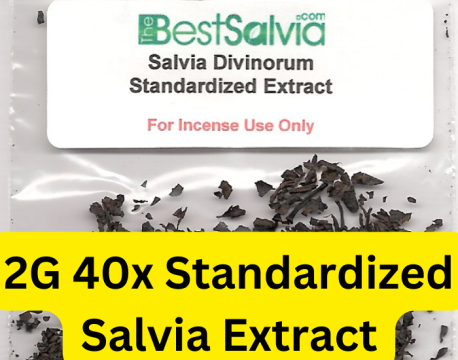Each sacred plant has been known to alter consciousness through spiritual enlightenment and healing; the same applies to sage plants. In using this plant, there are a few things to consider. First, the correct dosage should be used. The last thing one wants is to use old stale dried leaves. Always find high-potency and quality leaves you can get from a supplier.
THE MIRROR BALL – 8″ TILTED SPHERICAL MATRIX PERC BONG >>> SHOP NOW
Physical Characteristics of White and Green Salvia Plants
White Salvia plants are typically tall and sparsely branched, with dark green leaves on the top and lighter green beneath. They can grow up to about two feet in height. The leaves of a white salvia plant are typically long, curling under on the end like a scroll.
Depending on their variety, they can also be shaped like fans or fronds. Growers categorize white salvia plants into different varieties based on their leaf shape: ruffled-leafed variegated types, cupped-leafed types, lance-leafed types, and rounded-leaf types. Green Salvia Plants are typically shorter than white salvia plants (about one foot in height), terete plants with leaves that curl up at the tip like a pinecone.
They have an intense leaf color: lighter green below and dark green above. The vegetative parts of green salvia plants grow out of a basal or cotyledonary rosette, and its foliage branches in opposing pairs from the apex of these rosettes along margins that are often denticulated.
The Ideal Leaves
Experts have recommended using regular non–fortified leaves, and some will recommend starting with an extract-fortified product. Start with a more potent product since this will allow you to enjoy your first experience. When using a poor-quality product, you run the risk of being highly disappointed in the end.
While some may advise growing a harvest as a start, this may be too risky because a first-time user cannot know the true feeling of enlightenment, much less how to plant it. It has time and effort written all over it, and it may end up disappointing if the user does not grow a healthy plant.
Measuring Time for Sage Plants
The right time should also be measured since the plant “salvia” is not a drug. It is a herb you use for spiritual awareness and growing a conscious state of reality. It is not to be used as a recreational drug because this herb is much more.
The user must be in the mood for such an experience before he takes the herb. It is not the type that you can use when you want to. There must be an elevated mood for this herb to be used. It, of course, is upon user discretion. Experiencing salvia is of a different dimension. It may be soft and peaceful, enlightening and appealing. Colors can be experienced, as well as shapes and patterns, and it may be psychedelic.
Patience is Key With Sage Plants
It may last only for a few minutes. The trick to this is to embrace the experience. Once one has hesitations and reservations, the experience becomes worthless and a waste of time, effort, and money. The music also must fit the mood. The type of soft music should be used to induce the experience. It is a one-of-a-kind breakthrough and should be respected.
Any drug of its kind can never induce this experience, it is not the typical hit of any psychedelic drug, but this one has benefits. It makes one aware of their surroundings, making him at peace with himself. The proper dosage depends on the person, and the intensity of the herb varies. No one has ever been reported overdosing on salvia, so it should not be a problem.
ALSO READ: Salvia Divinorum and DPH Trips
Tips for Maintaining a Sage Plants Garden
Maintaining sage plants can be a rewarding experience for gardeners of all levels. Salvia is an attractive, low-maintenance plant that can thrive in almost any climate. With the proper care and attention, it can become an attractive addition to any outdoor space. This section will discuss the basics of maintaining a Salvia Garden, including watering and pruning techniques and tips on keeping your plants healthy and happy.
Before starting a salvia garden, it is important to consider your climate and determine what plants best suit your area. For more information on types of Salvia and which ones are easiest to grow in specific climates, read this article.
Watering TechniquesSalvia requires infrequent watering. As the plants mature, they should be watered sparingly every three days. When the soil dries out completely, water should be applied only when necessary to prevent root rot. Watering should also not be done when temperatures reach 90 degrees Fahrenheit or higher, as this could cause damage to the plant.
Once the soil is moist, use a fertilizer appropriate for your garden environment and soil. Fertilize once or twice a year at the beginning of spring and again in the fall with an all-purpose granular fertilizer. , such as 10-10-10 fertilizer.

2G 40x Standardized Salvia Extract >>> SHOP NOW
Salvia Grown In A Container
When growing Salvia in a container, use food-grade organic fertilizer with a dilution of one gallon of water per two gallons of soil. As the plants mature and increase, they will require more frequent watering and nutrients. Flowers may start forming on the tips of stems when growth is six inches tall.
For optimal flowering, it is important to provide supplemental lighting and water to keep leaves free from mildew, which can occur when only rainfall falls on foliage for more than 14 hours per day for over three consecutive days. Grow your salvia outside in a container and move it inside when the weather starts to warm up.
Conclusion
White and green salvia gardens are a beautiful addition to any outdoor space. These gardens feature a variety of white and green salvia plants that create a stunning display of color, texture, and shape. They can be used as an accent in any garden or as the primary focus.
These gardens can remain vibrant for many years with proper care and maintenance. White and green salvia gardens provide various benefits, including color contrast, low maintenance needs, and added beauty to your outdoor space.
MUST READ: Bongs and Pipes: Differences in Features and Functions

